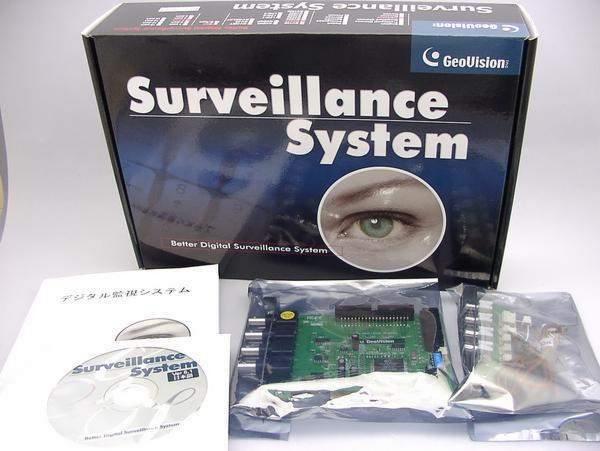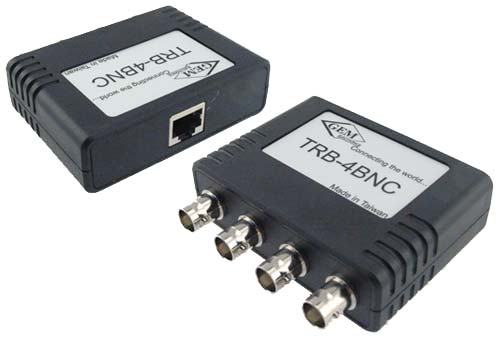

Soundy
-
Content Count
20 -
Joined
-
Last visited
-
Days Won
1
Posts posted by Soundy
-
-
That makes sense and I appreciate the response. For a decent system, how much should I anticipate spending and what brands should I then be looking at?As Shockwave indicates, it will really vary depending on your actual needs, but anticipate $100-$150 per camera, to start with... a "decent" four-channel DVR can run anywhere from $100 to $400 depending on what features and performance you need.
It seems like most of this stuff is sold online, leaving me unable to speak to an actual dealer in person to get recommendations.Any *good* online store will have a phone number, email address, or some other sort of contact that will let you communicate with a real person. If it doesn't avoid it. If it does and you get no response from the contact info, avoid it.
I did find that system at Costco. It is currently on sale for $150 off the original price, therefore it's usually more expensive than that $400 price, which made me wonder if it's a good deal and worth purchasing.Even $550 for all that indicates low-quality equipment. You should expect to pay $400 or more JUST for a decent PTZ, never mind the rest of it. (Hmmm, looking up that unit... it's not a PTZ, just a PT - fixed lens. Not terribly useful.
The specs also list D1 recording, and 240fps total on another line... but doesn't specifically state that it does both at the same time, which given the cost would lead me to think it probably only does 240fps at CIF resolution (352x240), or 7fps at D1.
-
Slightly off this once these are all connected to my american dynamics dvr will these all just show up on my box of squares I have already named themAs long as the same camera connects to the same input... yes. There's no FUNCTIONAL difference between this and individual coax runs.
that I have wondered about what are the differences between cat5 cable which has 8 wires and telephone cable which also has 8 wires.As far as use with video baluns... none. Baluns don't REQUIRE UTP; I've used them with alarm wire, speaker wire, microphone wire... four-pair UTP like Cat5e and Cat6 is more commonly used just because they're a more common wire, and because it allows for easy upgrade to network later.
Cat5e cable uses 4 twisted pairs. Each pair is twisted to cancel electrical or radio frequency noise that can be induced in the length of the run, which can affect the signal. There is a specification for the electrical and physical properties of cat5e cable, that goes into a whole range of characteristics, in order to optimize use for standardized signal handling in specific applications.Regular 4 and 8 conductor telephone wire is not usually twisted the same, and it is likely a different spec if it even has to meet a standard specification for the intended end use.
The twists in Cat3 and other such cables are also designed to reject outside interference... the specific twists in Cat5e and up - each pair different from the others - is designed to reduce cross-talk between pairs (signal induced in one pair from its adjacent pairs).
Either type will work fine for video over baluns.
-
I don't think there's one central site for pricing these things... you could try eBay to see what similar items are selling for, but you'll need to know the brand and model number of everything.
-
Uhh... copper?
-
Sorry, I should have mentioned that on the left of that picture, a cable plugs into the back of it which goes to the camera, Its looks like a rj45 but I'm not sure as its only long enough that it stops half way in the metal frame of the camera. So had to disconnect it in order to take a picture.Ah, that makes sense. Well, hard to say without seeing the actual circuit boards, but yeah, it sounds like that cable is the main connection between this interface board and the camera, and the black wire would most likely be something power-related, whether general camera power or just for the fan.
I should say I am from the UK so there might be some slight differences in power. But it does have a small fan inside which I assume is a blower. I have a feeling that is what the black cable is.Small fan is PROBABLY just a cooling fan, rather than something for circulating air to keep the dome clear. Either way, there should be no difference in the ratings you need to look for - you want a transformer that's 24VAC output, minimum 40VA output capacity. Only difference between you and someone in North America is that you'll be looking for something with a 240VAC input, rather than 120VAC.
-
I'm running two MP cameras over a WiFi link - one IQ511 (1.3MP) and one IQ755 (5MP), using a pair of ASUS routers and a WDS link courtesy of DD-WRT. It's relatively stable, although I don't know if I'd use it for a customer's site, at least not as such.
And of course, there are plenty of HTPCs and streaming media players that regularly stream HD video content via WiFi.
I think the warning against "HD and WiFi" is probably more related to cameras with weak built-in WiFi.
-
So far the Axis is not detecting any video signal and I was wondering if it's because the signal is modulated.This is exactly the problem. The best solution is to tap the video signal BEFORE the modulator (assuming it's not built into the camera, which is unlikely).
ust purchased an RF demodulator on ebay for $85. Will post back if this does the trickFor that price, you could have just replaced the camera with something that gives you a standard composite-video output, or with an IP camera that you could access directly from your smartphone. For that matter, for the cost of the Axis encoder and the demodulator, you probably could have just added a megapixel IP camera to access directly from your smartphone.
-
The labelling on the unit is pretty clear: the red connector is for 24VAC power, the black connector for the serial connection. As to why there are two wires on each of the red terminals, I'd guess that's just done to double the current capacity, since that appears to be fairly small wire.
Id' say your power supply should be at least a 40VA rating, more if the PTZ has a heater/blower.
What's odd is the connection to the camera: a single pair to carry video, power and serial??
-
-
Does this mean I can buy a used card and download the software and/or does it mean I have to have one of the models listed?If it's a real GeoVision card, you can get the software from GV directly, but you have to provide the serial number that will be on a sticker on the card.
-
Well, the box only says surveillance systemSomething like this?
 I'd rather use my system with win7 and 4 gigs so I can have it as a decent back up computer anyway
I'd rather use my system with win7 and 4 gigs so I can have it as a decent back up computer anywayAgain, if you're going to continue using the card with it, you'll have to make sure there are Win7 drivers available.
-
You're right, doesn't sound like this guy has a clue.
He is right on one point: a lot of cards, especially cheap cards, don't have proper Win7 driver support, so they won't work properly with anything but XP. If there are Win7 drivers though, there's no reason they shouldn't work as well.
As for memory, there's ZERO reason it should be more or less stable just because you have 4GB vs 2GB memory. Instability COULD be caused by bad or faulty RAM, but not by the amount itself.
The software he installed for me locks up and is really hard to close out/end the process.It could be because of the installation which seems to be corrupt (the OS I mean)
What card and software are you using? Symptoms like these are common when using cloned/grey-market GeoVision cards, since the drivers and software must be hacked to work with the fake cards. I expect it's a common occurrence with other illegitimate cards as well.
but he claims it's because I have 4 gigs in the computer.He's out to lunch.
Also, if you could direct me to something decent to buy online for simple surveillance for either 8 or 16 channelsand a few of them with sound.
GeoVision is a decent DIY system, but beware of cheap cards from online/eBay sellers - there are a LOT of fake ones out there. A legitimate seller should be able to provide you a serial number of the card you're buying. If you look up "GV800" on eBay, for example, you'll find tons of listings for <$150, and several for around $500-$600... pretty much guarantee the $150 ones are fake and will very likely give you problems.
-
That doesn't mean it's a camera... my bet would be on some sort of PIR motion detector.
-
What makes you think it's a real camera?
-
These guys are quite "image-conscious" and are pretty set on using dome cameras. The Axis I used was a box style, just because that's all that was available to me to test... they let it slide because it was only temporary. I'm not aware whether there's a dome version of the 3MP Dahua box.Do you have the ability to test an Axis P3354/64 in that scene? It's a dome, not WDR but just as light sensitive as the Q1604 and produces a very sharp image.
If you can provide one, they'd probably be glad to have me test it - they know they have harsh lighting to deal with, so they like to know what their available options are.
Light sensitivity is only half the equation though - as you see from the clips, dynamic range is a major issue on these sites.
-
Thanks Matt, but I was more looking towards the WDR performance in a hostel foyer. It will be pointed straight at a door to outside. I do understand that CCD > CMOS for WDR but I hope to use a MP solution rather than analog.
As indicated by the title of that thread... three of the four cameras ARE megapixel, including the Axis that blows the others away. It's not "backlit" like you'd have in a doorway, but you get a good idea of how it handles the extreme dynamic range of that situation: dark floor, dark fixtures, little pin-spots above each of the tables... from a "sensor" standpoint, there's little difference between the lounge scene and a backlit doorway.
-
-
You could use a transistor buffer or opto-coupler to allow the 3.3V to trigger a standard relay... most small relays are going to be either 12V or 5V.
-
That would make more sense.
Vigil uses MAC-based software keys - when you install it, you're prompted for the card type, or you can select "NVR", which simply installs it without card drivers.
-
-
Keep in mind that a capture card has NO (direct) effect on the IP video. A software compression card may put excessive load on the CPU, but IP video does not use the card at all. I'd tend to suspect the difference in in the software itself, and its handling of the H.264 video.
-
Vigil DVRs can accept the serial POS data and log it in a searchable database, perfectly synchronized to a related camera (each terminal number can be assigned its own camera). When playing back video, the corresponding line in the POS display is highlighted; when selecting any line in the POS display, the associated camera is displayed at that exact time. Great thing about the POS database is that it's completely searchable, something you can't do with video-embedded text.
There are other DVRs that will do this, of course... this is the one I'm familiar with, though.
edit: found it!
ap89dschKlA
-
Both/either? Some of these come with Bluetooth as well, so you could use a BT mouse/keyboard.
-
Realtime POS text overlay is SO 1992. Transaction data logging in the DVR is so much more efficient, effective, and powerful.


Installation Problem In Service Garage
in Installation Help and Accessories
Posted
How many pairs of the Cat5 are used for power, and how much current do the cameras draw? Sounds typical of voltage loss caused by too much current draw over too-small wire. If that's the case, replacing the power supply won't fix it, as it's not a matter of how much current is available at the source.